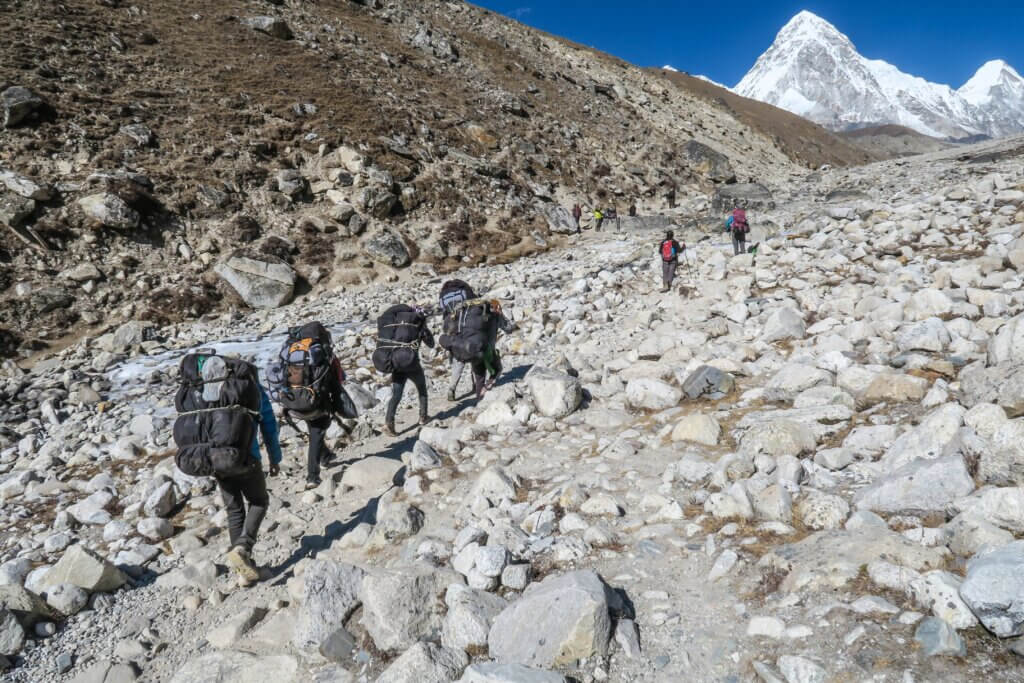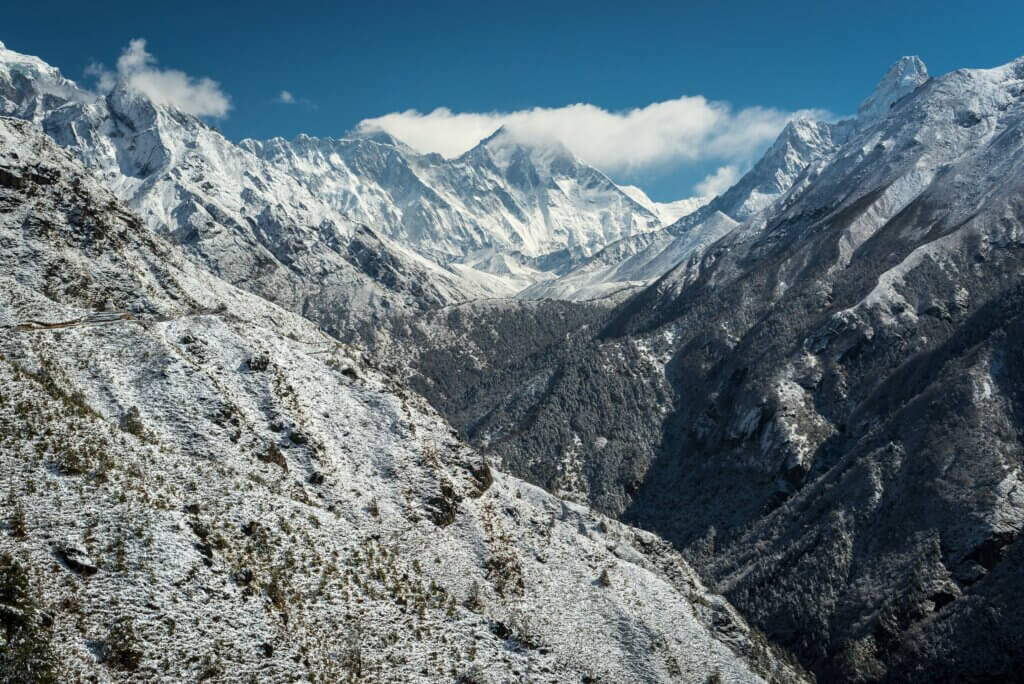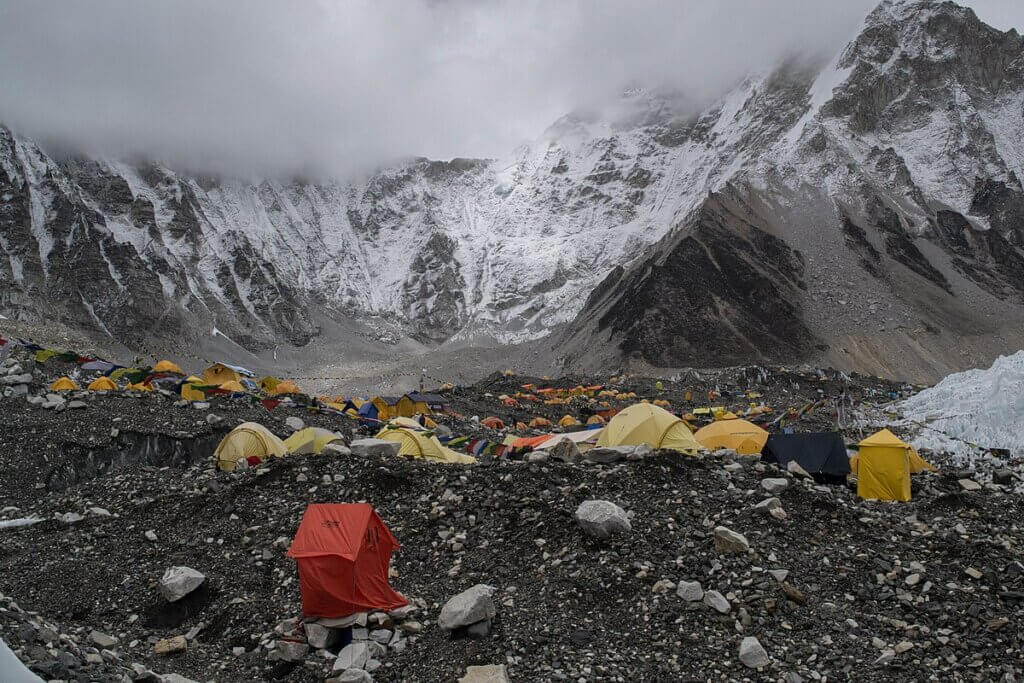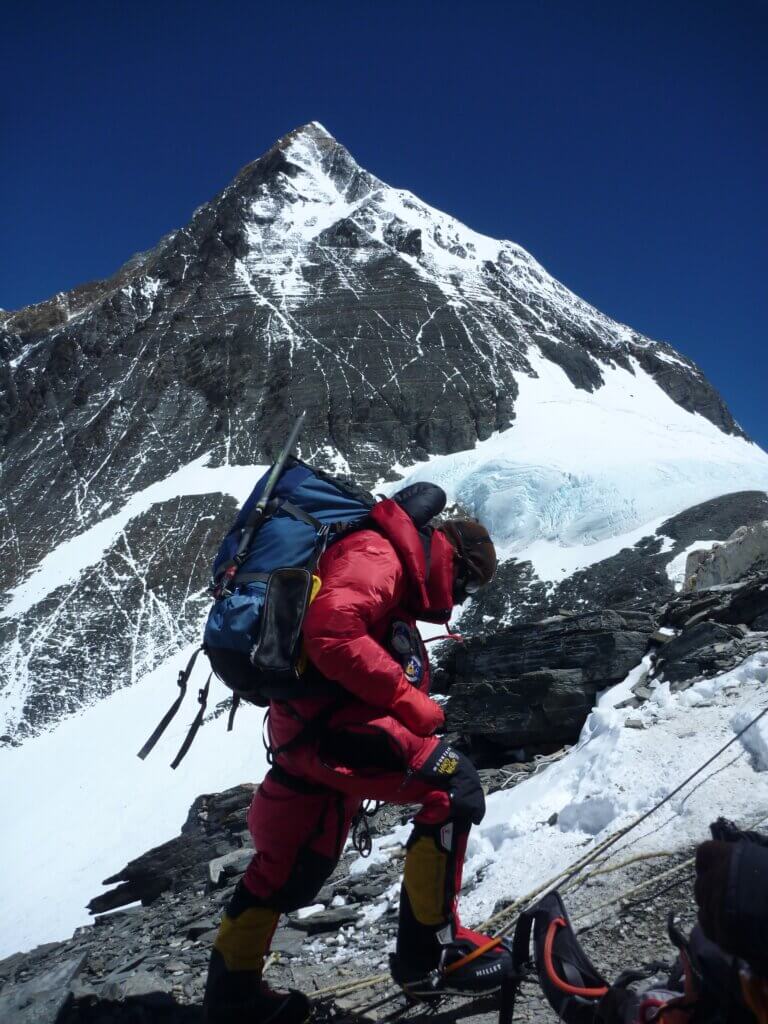The allure of standing atop the world’s highest peak, Mount Everest, has beckoned countless climbers since the landmark achievement of Edmund Hillary and Tenzing Norgay seven decades ago. The 1990s saw the advent of commercial expeditions. Excepting interruptions like the devastating 2015 earthquake and some Covid-affected seasons, the count of climbers has soared.
Despite its burgeoning popularity, the challenge posed by Everest remains immense. Beyond the substantial financial commitment, the physical rigours of ascending to such an altitude are formidable. Killian Jornet’s exceptional double summit in a week without additional oxygen is a rarity. Most climbers must allocate considerable time for their journey to the summit.

A symbol of adventure, captured in numerous films, documentaries, and literary works, Everest’s allure is undeniable. With a height of 8,848.86 metres or 29,0129 feet from sea level, it stands unrivalled as the globe’s tallest point. Its prominence over the world’s second highest, K2, is by a notable 239 metres.
Touted as the pinnacle of adventure pursuits, scaling Everest offers an unparalleled adrenaline surge. But the endeavour is far from straightforward. Successful ascents typically draw on years of mountaineering expertise. Legendary figures like Sir Edmund Hillary, Tenzing Norgay, Scott Fischer, Rob Hall, and others have etched their names in Everest’s history. Climbing its staggering 8,848 metres demands supreme stamina and tenacity. Equally crucial are patience and unwavering determination. For those intrigued by the specifics of such an expedition and the duration it entails, comprehensive insights await.
Traversing to Everest Base Camp: The Essential Trekker’s Overview
Everest Base Camp: Navigating the Ascent and Return
Setting out from Lukla, situated at 2,860 meters above sea level, climbers embark on a journey to reach Everest Base Camp. It usually spans one to two weeks. This initial point is accessible by a modest airport where many mountaineers stock up on essentials and employ porters for assistance.
Those trekking solely to the base camp have the luxury of a slower pace, allowing them to soak in the vistas of varying peaks, quaint villages, and ancient monasteries. However, for those with their sights set on the summit, a significant entourage of porters becomes indispensable, given the volume of equipment and provisions required.

Ascending to the base camp, located at 5,380 meters, is predominantly uphill. As trekkers venture further, they pass through progressively smaller villages, encountering monasteries that sit majestically in the high mountain terrain. Essential items for this trek encompass mountaineering gear, food, cooking apparatus, tents, bedding, and a water source, often derived from melting snow upon reaching the base.
The thinning air at such lofty altitudes proves challenging for many, with breathing becoming laborious, a challenge even during sleep. The risk of altitude sickness is a reality, with reactions varying across individuals.
The descent from the base camp to Lukla, being downhill, is comparatively quicker, taking roughly two to three days. In a bid to expedite their return and aid in the removal of waste, several climbers opt for a helicopter ride back from the base camp.
Aerial Routes to Everest: Helicopters, Planes, and Limits
While helicopters can transport enthusiasts to the Everest Base Camp for sightseeing, reaching the summit this way remains unfeasible. The challenges of landing an aircraft near the peak are insurmountable, given the absence of suitable terrains. Venturing with a helicopter near the perilous “death zone”, situated above 8,000 meters, is widely considered treacherous due to thinning oxygen levels resulting from decreased air pressure. This sparse oxygen not only hampers climbers, necessitating supplemental oxygen, but also impedes helicopters. It makes lift generation and control maintenance nearly unattainable. For conventional aircraft, Lukla town houses the nearest airport, distinguished by its notably brief runway.
Everest Ascent: Phases of the Monumental Climb
The expedition to Mount Everest typically spans between 6 to 11 weeks, with a standard duration of around two months. This time frame accounts for various factors, including the chosen itinerary, the equipment used, the proficiency of the support crew, and the climbers’ own abilities. Prior to embarking on such a monumental quest, one must undertake thorough research, especially regarding weather conditions.
Journeying to Everest begins in Nepal’s capital, Kathmandu. From here, a brief flight transports adventurers to Lukla, known for its intimidating cliffside airport. Following this, there are options to either trek or opt for a helicopter ride to reach the Everest Base Camp.
Once at the base camp, it’s imperative to acclimatise to the significant altitude to avoid severe altitude sickness. Notably, even minor ailments, be it a simple cold or more severe issues like flu or diarrhoea, can escalate due to these conditions, necessitating an emergency evacuation. It’s also worth noting that while Everest straddles the border of Tibet and Nepal, most climbers favour the ascent from the Tibet side.
Preparing and Trekking to Everest Base Camp: The Initial Ascent
Upon arrival in Kathmandu, preparations for the Everest ascent begin immediately. It’s common for climbers to spend about a week in Nepal’s capital. In the bustling tourist hub of Thamel, they gather essential gear and liaise with tour operators. Additionally, they organise the necessary paperwork and permits essential for the Everest summit. This administrative process can have climbers mingling in the vibrant streets filled with cafes, restaurants, and temples as they await the approval of their permits.

With all formalities completed, the next leg of the journey takes climbers to Lukla, marking the beginning of the ascent towards Mount Everest. The trek from Lukla to Everest Base Camp typically spans 8 to 12 days. This base camp becomes home for several weeks as climbers acclimatise to the challenging altitude. During this acclimatisation period, many utilise the time to summit neighbouring peaks, gradually adjusting their bodies to the reduced oxygen levels at such elevations.
The Everest Base Camp Trek is a path filled with captivating landscapes and cultural landmarks. Along the way, trekkers encounter a variety of attractions, from the world-renowned Lukla airport, known for its extreme landing conditions, to the serenity of alpine forests. The journey also provides glimpses into the vibrant Sherpa community, with stops in places like the bustling Namche Bazaar and the peaceful Tengboche. The combination of a gradual ascent and rigorous preparation sets the stage for the ultimate objective. Once acclimatised and confident, climbers set their sights on the monumental task ahead: the ascent of Mount Everest.
Journey to the Icefall: Navigating Everest’s Perils
After thorough acclimatisation, reaching the Icefall camp typically requires a walk of 3 to 5 hours. Despite the brevity of this route, it’s peppered with hazardous areas, including open crevasses and zones prone to avalanches. To safely navigate these extreme conditions on Mt. Everest, adhering to the guidance of the Sirdar is paramount.
Journey to Camp 1: Navigating Snowy Terrains and Hidden Crevasses
The journey towards Camp 1 traverses a flat, snow-rich terrain marked by unexpected crevasses and imposing rocky walls. Even seemingly minor cracks in the snow’s surface can evolve into perilous crevasses. Therefore, securing oneself to fixed ropes while walking is strongly advised. This stretch typically takes between 4 to 7 hours to navigate.
Approaching Camp 2: The Last Taste of Comfort at 6800 m
On this day of the ascent, the peak of Mount Everest becomes distinctly visible to trekkers. Regrettably, this is the final campsite where climbers can expect properly prepared meals. To aid in acclimatisation at such a lofty altitude, a day’s walk towards Lhotse’s face is beneficial.
Ascending Lhotse Wall: The Journey from Camp 2 to Camp 3
Navigating the trail to Lhotse Wall requires meticulous attention to safety, with the continuous use of ropes and regular changing of carabiners, irrespective of the terrain’s flatness. Novice climbers often take between 5 to 8 hours to traverse this segment. In contrast, seasoned mountaineers can accomplish the same stretch in a mere 4 to 6 hours.

Approaching the ‘Death Zone’: Camp 4 and the Final Ascent
Situated just below the renowned “Death Zone”, Camp 4 serves as the final camping spot at the culmination of the Lhotse wall. This location bears a stark resemblance to a plateau on the very edge of the world. It’s at this daunting altitude of approximately 8,000 metres (or 26,000 feet) where the ambient oxygen levels plummet drastically, making it inhospitable for human survival.
This is where supplementary oxygen becomes indispensable, except for a select few exceptionally elite climbers. After undergoing meticulous planning and acclimatisation, climbers brace themselves for the ultimate push towards the summit of Mount Everest. This stretch, from Camp 4 to the pinnacle, is recognised as one of the most gruelling and technically challenging phases. Depending on various factors, including potential queues, this ascent can span anywhere between 10 to 20 hours.
Final Ascent: Reaching Everest’s Summit and the Journey Back Down
From Camp 4, climbers, although exhausted, attempt to rest before the final push. As the conditions become favourable, they embark on the summit attempt, typically setting off around 11pm. The journey to the peak can span between 6 to 10 hours, while the return to Camp 4 generally takes half that time.
Reaching the summit of Mount Everest is a significant accomplishment that marks the culmination of one’s arduous journey. Overcoming the many challenges along the way rewards climbers with the unparalleled experience of standing atop the world. However, amidst the excitement, it’s imperative to remain cautious. The ascent, though exhilarating, poses great difficulty, and descending can be just as perilous, especially with dwindling oxygen levels. It’s crucial to make the return to a secure camp promptly, yet without undue haste. Throughout the expedition, the essence of teamwork and coordination cannot be emphasised enough.
Every individual has aspirations and dreams. Yet, many often hold back, citing constraints like finances, time, or work. The journey to Everest’s summit serves as a reminder: seize the day and carve out a legacy that future generations will remember.
Summiting Everest: The Strategic Timing of Night Climbs
Initiating the final push from Camp 4 to Everest’s summit typically begins under the cover of night. The obscured ascent is navigated using headlamps, illuminating the ropes and the path ahead. As climbers approach the challenging Hillary Step, dawn usually breaks, shedding light on the route’s most technical sections and reducing the risk of missteps over precipitous drops.
Reaching the summit is then achieved in broad daylight, ensuring that the crucial descent is undertaken with maximum visibility. This is vital, as the descent poses a heightened risk; many fatalities on Everest happen during this phase. Exhausted climbers with depleted mental and physical resources need to avoid delays and remain vigilant. Tragically, some have perished mere metres away from the sanctuary of their tents at Camp 4, often due to inclement weather and compromised visibility.
Factors Prolonging the Everest Ascent: Trekking, Acclimatisation, and Weather
The prolonged process of scaling Everest can largely be attributed to three pivotal factors: the initial trek, the essential acclimatisation stages, and the unpredictable weather conditions. Commencing the expedition, adventurers have the choice of embarking on an 8 to 14-day trek, contingent upon the necessity for rest and acclimatisation. This trek can be bypassed by opting for a costly helicopter ride from Lukla to Base Camp, but only when weather conditions are favourable.
A vital aspect of the expedition lies in acclimatisation, predominantly conducted at Base Camp before advancing to the subsequent camps. Climbers gradually ascend to Camps 1, 2, and 3 to adapt to the rising altitudes. Having reached Camp 3 without complications, it’s typical for climbers to return to Base Camp to recuperate and resupply. Subsequently, they ascend back to Camp 3, typically spanning a day or two, to gear up for the paramount summit push.
However, the mountain’s unpredictable weather patterns play a significant role in determining the expedition’s progression. There are instances where only a brief window, sometimes spanning merely a day or two in an entire year, permits safe ascent due to non-lethal wind and cold. Such erratic weather not only poses the risk of halting climbers at any stage of their journey but also endangers established camps and equipment. Camps can be decimated, vital gear can be swept away, pathways in the Khumbu Icefall might alter, and the looming threat of avalanches persists. In essence, those daring to scale Everest are bound to its mercurial nature.
Descending Everest: Traditional Routes and Record-Breaking Feats
While descending from Everest’s summit to Base Camp can be accomplished in under a day, this direct descent is relatively rare. Typically, climbers take a pause at Camp 4 before descending further to Camp 3 or Camp 2 for a rest. Once re-energised, they proceed to Base Camp, a journey that can be completed in less than a day, provided the Khumbu Icefall remains stable.
However, some intrepid adventurers have found unconventional methods to descend in record times. Notably, Davo Karničar achieved a remarkable feat by skiing from the summit directly to Base Camp in merely five hours, marking him as the first individual to complete such a descent on skis. Similarly, Jean-Marc Boivin undertook an astonishing paragliding journey from just below the summit, landing at Camp 2 within 12 minutes.
Though Yuichiro Miura holds the distinction of being the first to ski down parts of Everest, he did not complete the entire descent on skis. Several enthusiasts have attempted the skiing route, but many have had to revert to walking due to challenging terrains. Furthermore, Marco Siffredi and Stefan Gatt earned their place in history as the pioneering duo to snowboard down Mount Everest, although they encountered obstacles along their descent.
Disputed Speed Records of Everest Ascents
Lhakpa Gelu Sherpa
Numerous climbers have staked their claim to the title of the fastest ascent of Everest from Base Camp to the summit. Yet, the authenticity of many of these records remains dubious due to the absence of concrete video or photographic evidence.
For instance, in May 2003, Lhakpa Gelu Sherpa declared an impressive ascent time of just 10 hours and 56 minutes from the south Nepalese Base Camp with the aid of oxygen bottles. To date, this record remains officially unbeaten.
Pemba Dorje
Just a few days before Lhakpa’s feat, Pemba Dorje Sherpa asserted a climb time of 12 hours and 45 minutes. Later, in 2004, he presented an even more astounding record of 8 hours and 10 minutes. However, the Nepal Supreme Court later nullified this claim.
Kilian Jornet
In another notable mention, Kilian Jornet stated that he conquered Everest in 26 hours without relying on oxygen or fixed ropes. Despite this, his claim has been mired in scepticism due to inconsistencies in GPS data and a lack of photographic corroboration. Intriguingly, there’s a photograph that depicts him using a fixed rope, contradicting his original claim. Jornet later reported another summit from the Advanced Base Camp on the Tibetan side, reaching the peak in 17 hours, once more without oxygen.
Although Jornet holds speed records for various other peaks like the Matterhorn, Aconcagua, Mount Elbrus, and Mont Blanc, some of these accolades have also faced scrutiny.
Modern Verification of Everest Speed Claims
Given that most climbers typically require 2-3 days from Base Camp to the summit, any claim of completing this challenging journey in less than a day, especially in under 12 hours, invariably raises eyebrows. Thankfully, with the advancements in communication such as radio contact, combined with modern GPS tracking and photographic evidence from fellow climbers, validating new ascent records has become somewhat more straightforward.
Furthermore, on the North Col route from the Tibetan Advanced Base Camp, Hans Kamerlander has put forth a record of a 16-hour 45-minute ascent without the aid of oxygen.


